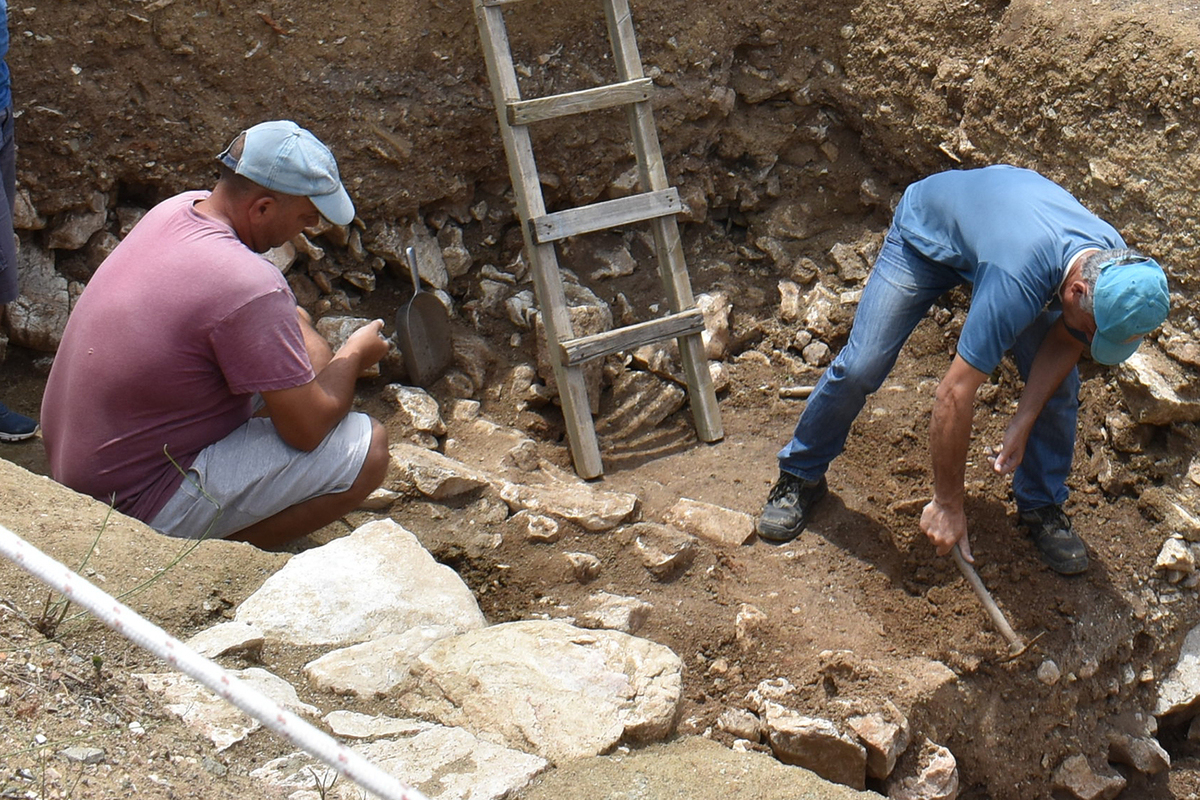Research breakthrough: burial site of ancient piercing connoisseurs found in Turkey
[ad_1]

Archaeologists in Turkey have discovered groundbreaking evidence linking prehistoric facial piercings to the bodies of the people who wore them. Similar finds were found exclusively in adult representatives of the Neolithic era. Scientists believe that this was due to a change in social status.
Personal jewelry, including earring-like objects believed to have been worn as piercings, has been recorded among Neolithic or Late Stone Age peoples in many places in Southwest Asia. But none of the items interpreted as piercings had previously been directly associated with body parts on which they might have been worn.
Now, analysis of excavations at the Boncuklu Tarla archaeological site in south-eastern Turkey has revealed burials in which piercing jewelry was found located near the ears and mouths of the grave occupants.
People of all ages were buried in Boncuklu Tarla, but the newly described decorations were found only next to the remains of adults, CNN clarifies. This suggests that children did not wear such jewelry, and according to the study, acquiring such piercings may have been a coming of age ritual within certain social groups.
There is other evidence of rituals to “celebrate” coming of age in the Neolithic era. For example, burials in which the body is decorated with certain artifacts, “or placing the deceased in certain places prescribed for a certain age group,” said anthropological archaeologist Dusan Boric. However, according to Borich, it is impossible to remember other examples as convincing as the current one.
Hunter-gatherers occupied Bonchuklu Tarla from about 10,300 BC. to 7100 BC, when people began to move away from the nomadic lifestyle and form settlements.
The first excavations at this site were carried out in 2012. Since then, many decorative objects from the Neolithic period have been found here: about 100 thousand decorative artifacts have been discovered to date. Emma L. Baysal, an associate professor of archeology at Ankara University in Turkey, called the figure staggering.
“The number is just incredible. This is a place of people who simply adore jewelry more than any other people of that time. They had a huge amount of beads, and they made complex things from the beads, including necklaces, bracelets, pendants in the shape of animals and jewelry that could be sewn onto clothes,” Emma Baysal shares amazing data.
They also made jewelry for ear and lip piercings. Labrets, which are still worn by some cultures in the Amazon and Africa, come in a variety of shapes: round, oblong and disc-shaped. Some are long and thin, but most have one end wider and flattened, and they vary in diameter and width.
Scientists have identified 85 objects from the burials of Bonchuklu Tarla as piercing jewelry made from materials such as flint, limestone, copper and obsidian. The researchers divided the labrets into seven types based on their shape: all had a diameter of at least 7 millimeters, and the largest was just over 50 millimeters in length.
The jewelry, described as Type 1, had long shafts and was “nail-like,” according to the study. They were probably worn in the ears.
Elongated types 2, 4 and 6 were also considered ear decorations. In comparison, labret types 3 and 5 had shorter, more convex shafts. Type 7, a flattened disc, was also considered a type of labial piercing.
Although children were buried with pendants and beads, none of them had ear or lip jewelry.
“It’s probably something to do with growing up. Maybe this is a kind of social status associated with age, or a certain role in society,” Baysal clarifies.
For archaeologists working to piece together how prehistoric peoples presented themselves to each other and to outside groups, piercings and other forms of body decoration “are absolutely the best source of information we have about the people of these periods.”
This form of self-expression may be rooted in the mythology of traditional societies, Dusan added, in which “a particular genre of myth is associated with the origins of adornment, suggesting the fundamental importance of body adornment as an act that goes beyond purely aesthetic considerations”: “Wearing bodily adornment may have been more an act of construction and personal protection.”
That is, these are not just elements of everyday life. “When you put on earrings, you can’t see them yourself. You are not doing this for yourself. You do this in order to project yourself onto other people. And I don’t think the situation has changed in all these thousands of years. It’s a way that we can identify with people from the past and think, ‘Well, they’re actually a lot like us,'” Emma Baysal concluded.
[ad_2]
Source link








